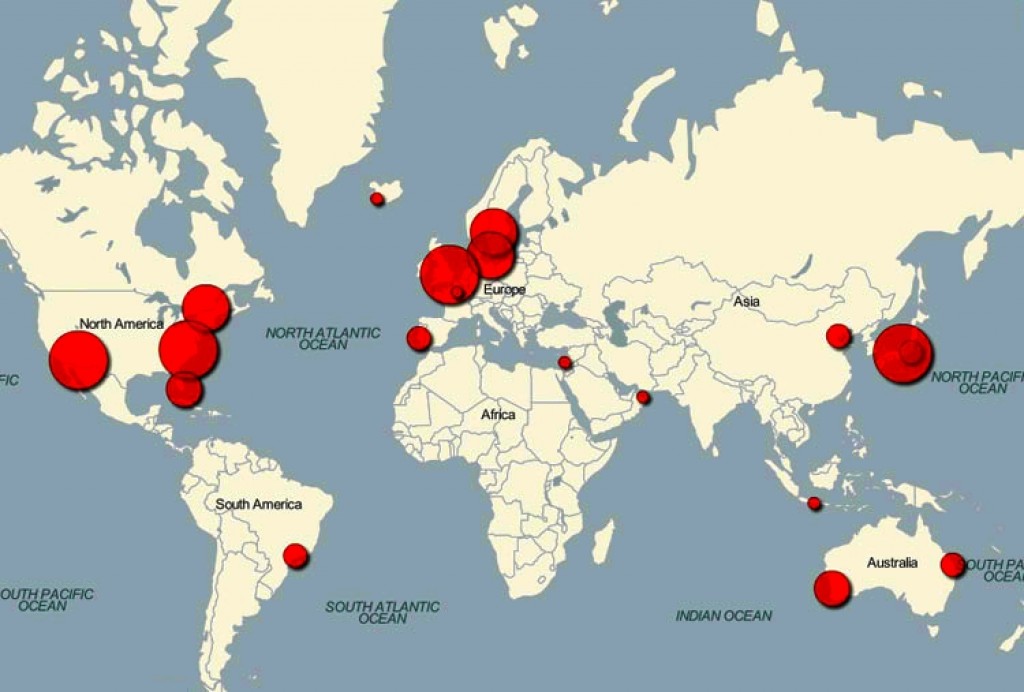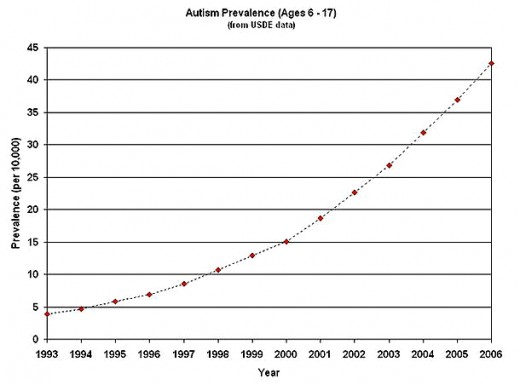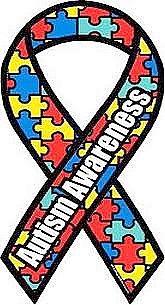Concern as Autism Rate Increases and Environmental Links Identified
Autism has become a growing concern for parents as the diagnosis rates have increased and recent research has
suggested possible links with various environment associations such as low birth weight, twins and multiple births,
various infections, and the age of mothers when they give birth.
Over the last 30 years a ten-fold increase
in the prevalence of autism has been reported in the US, from 4 to 5 per 10 000 in the 1960s to around 40 per 10 000 children today.
Some of this may be explained by better diagnosis it nevertheless points to a growing problem for parents and the community. If the new findings of links with he environment are verified, it would align with modern trends for older mothers, increasing mother weights and obesity and other environmental risks and social trends.
It could also lead to early intervention strategies by identifying who may be at risk and how to reduce the effect of the environmental causes of autism.




Autism is a complex neuro-developmental childhood disorder that disrupts the normal development of social,
communicative, and cognitive features of the child. The symptoms of autism and its diagnosis usually occur
in the first 3 years of life for the child.
While previous studies have shown a strong link
with inherited genetic factors, with more than 90 per cent of cases linked with inheritance, recent studies
of twins that have identical genetics suggest that the environment may explain up to half of the risk.
This has triggered requests for more research to examine possible environmental causes and the possible
early-intervention and prevention strategies based on early recognition of the risks.
A definitive study published in the Archives of General Psychiatry journal, involved 192 sets of twins in which at least one of the twins had been diagnosed with autism or a similar disorder.
The study results suggested that environmental factors shared by the twins, explained about 55% of the liability to autism. Although genetic factors still played a major role, they were of lower significance than was previously thought. The study suggested that many of the symptoms of autism can be seen towards the end of the first year of life. The prenatal environment and early postnatal environment are identical for twins and so this enabled the effect of genetics versus environment to be tested.
The researchers compared autism rates in fraternal twins (different genetics) compared with identical twins (same genetics), for the instances where one twin had autism and when both twins showed symptoms. The researchers argued that if autism were purely a genetics related disorder, both twins in each identical-twin pair would have it. On the other hand if autism was caused, or influenced by environmental factors alone, then the autism rates in fraternal twins and identical twins would be identical.
The results suggested that the shared environmental factors that applied to both twins explained about 55 percent of the risks for autism, not 10 percent as was estimated previously. Although genetic factors also played an important role, they are of substantially less than previous estimates from similar studies of twins with autism.
Clearly the findings show that both environmental and genetics need to be considered as well as the interactions between genes and environment.
The researchers suggested that from previous studies some of the environmental linkages that posed risks could include parental age, multiple births, low birth weight and maternal infections during pregnancy.
A separate study also published online by the same journal, claimed to find a moderately higher risk of autism among women who took antidepressants while pregnant. However research has shown that depression is more common in families affected by autism. Consequently the link may not be causal as the autism may lead to more parents taking antidepressants. Clearly more research is required to test the risks from these and other environmental factors.
Various experts have stated that if confirmed by further studies, the findings would radically alter people's understanding of how autism should be addressed and might for the first time allow for prevention strategies. Perhaps autism and related problems can be considered, at least in part, a disorder of fetal programming.
The evidence suggest that affect the maternal fetal environment may place the fetus at increased risk for autism. Clearly the identification of these risks and early intervention offers hope of reducing the rising incidence or diagnosis of autism. Many potential risk factors should be checked again including parental age, mother's weight and obesity, maternal genetics and family history, maternal-fetal immunity issues, in vitro fertilization, maternal ingestion of drugs, toxic chemicals in the environment during pregnancy, and maternal illnesses during pregnancy such as maternal diabetes or infections. It is also possible that the environment could interact with genetic variants and either increase or decrease its expression.
The researchers called for more accurate diagnosis and population sampling, to verify whether there is a genuine increase in the rate of autism and the potential that environmental factors may be a significant causes. This would allow the effectiveness of various early intervention strategies to be tested to hopefully reduce the incidence of autism in the population.